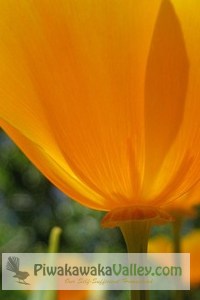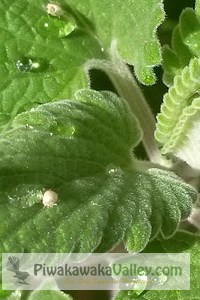This post was most recently updated on August 22nd, 2021
The knowledge of medicinal plants and their uses has become lost over the last few generations, but it is making a great comeback. Check out the best medicinal herbs that you can grow at home. Personally, I am trying to get back to the old medicine. The way things were before doctors got big bonuses and freebies from big pharma.
Please read: This information is provided for educational purposes only and is not intended to treat, diagnose or prevent any disease. We encourage you to make your own health care decisions in partnership with a qualified health care professional.
This post contains affiliate links, this means at no extra cost to you, we make a commission from sales. Please read our Disclosure Statement
Herbal medicine, food as medicine, healthy lifestyle and natural remedies – it is a super big area of knowledge and I am just beginning on this journey, but I have made a start in some basic herbal remedies.
Medicinal plants are essentials to your backyard, they ensure you have a medicine kit no matter what life may throw at you. If you want to learn more about medicinal plants and their uses in your life, I really recommend the Herbal Academy courses.
I have put together the top 10 list of medicinal plants and their uses with pictures that you can grow at home easily.
These medicinal herbs are fairly easy to find, many of them even grow wild in several areas. *Be aware that collecting some wild herbs are illegal in some places!
Medicinal herbs in general are fairly hardy and easy to grow. Most herbs will readily grow from seed, but the easiest way to propagate medicinal herbs is to divide existing plants.
RELATED POST: The benefits to herbal medicine
Top 10 Medicinal Plants and their Uses with Pictures (That you can Grow at Home)
1. Growing and Using Californian Poppy

The Californian Poppy is related to the opium poppy but it is much more gentle. It is one of the best natural nervous system relaxers, sedatives and pain relievers around.
You can buy extract already made here.
2. Growing and Using Catnip

When taken as a tea, catnip can help ease a chronic cough or help you fall asleep.
Catnip grows well from seed in small pots on your patio or in your herb garden. It is a native to much of Europe, and is also known as catmint, catswort, field balm, catrup, catnep and cat’s-play.
RELATED: 10 easiest herbs to grow in a pot
3. Growing and Using Chamomile

Chamomile grows best in cool conditions and should be planted in part shade, but will also grow full sun. You can grow from either seed or from splitting existing plants.
The flowers are used in a soothing tea.
4. Growing and Using Dandelion

Eating the leaves or making tea with the flowers or roots are the most common ways to use dandelion.
If you choose to harvest wild dandelion, check that isn’t from the side of the road or anywhere that may have been sprayed or polluted.
5. Growing and Using Dill

It is often used as a flavor in meals or while preserving pickles. The seeds are stronger in both flavor and beneficial oils.
Tea can be made with either the seeds or the leaves to help aide digestion and soothe indigestion.
RELATED: 10 foods you can grow at home that you can’t buy at the store
6. Growing and Using Echinacea

Echinacea is also known as Coneflower and you may find it in central and eastern North America.
It is a drought resistant perennial, so you can find it in scattered patches in rich prairies or sandy soils. It is able to reach a height of 2 to 5 feet (60 to 150 cm) and it grows best in full sun. Buy seed here.
7. Growing and Using Feverfew

More recently feverfew is more popular these days after research found that when taken daily it reduces the frequency and severity of vascular migraines.
Feverfew is easy to grow from seed or from division of existing plants. You can eat the bitter leaves in salads or sandwiches or make a tea from the flowers.
8. Growing and Using Garlic

Garlic can be used liberally in the diet both raw and cooked. It is a natural antibiotic and antiseptic, especially effective in treating infections of the digestive and respiratory systems.
Garlic directly destroys harmful bacteria, fungi and viruses and at the same time it enhances the body’s natural immune defenses.
9. Growing and Using Peppermint

Mint will spread and take over your garden, so it is best grown in it’s own space or in a pot that has been sunk into the ground.
Peppermint is great as a mood and energy booster, it encourages good circulation and it acts as an anti nausea and treats indigestion.
10. Growing and Using Yarrow
Yarrow grows like a weed around here. It’s little flowers can be anything from white, red, yellow and pink and anything in between. The flower colour has no effect on the medicinal properties.
You can make your own styptic powder to stop bleeding instantly by blending dried yarrow leaves in a food processor until they are powdered. Store this in a sealed glass jar and apply it to cuts and abrasions. You can buy pre-powdered yarrow through amazon. For an even greater effect add some cayenne powder to the mix. Just don’t get it in your eyes!!
So there you go, the top 10 medicinal herbs to grow at home. For more information about using these medicinal herbs, grab our free ebook!
If you are really serious about learning more about using herbal medicine, check out the Herbal Academy.
How did you find this list of medicinal plants and their uses?
Do you grow any medicinal herbs at your place? Tell me what you grow in the comments below!
Please pin and share with your friends!



















